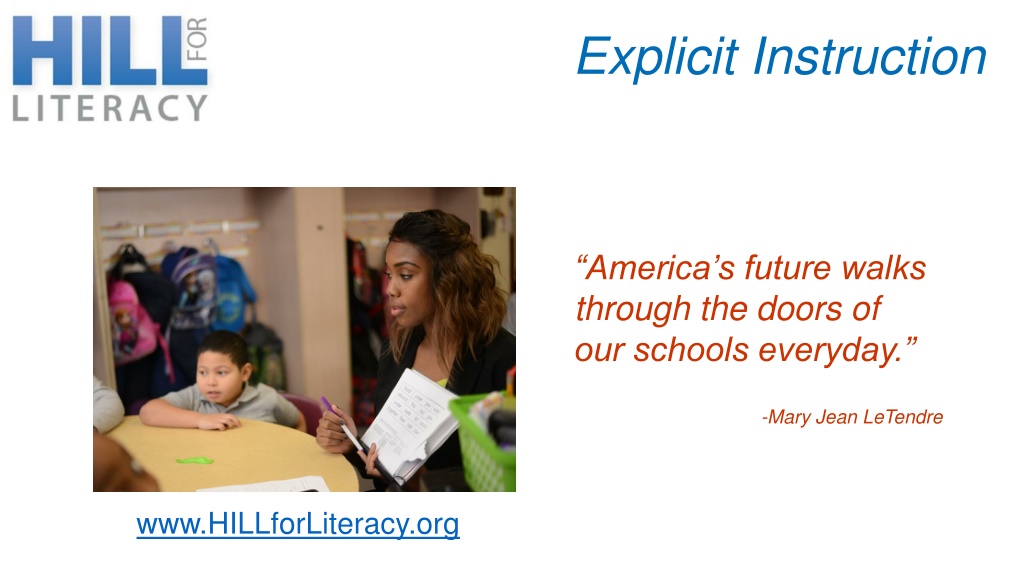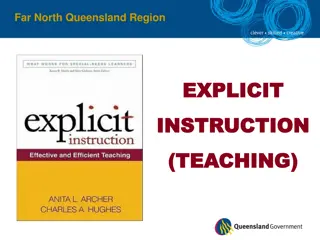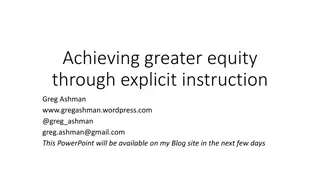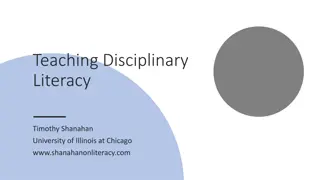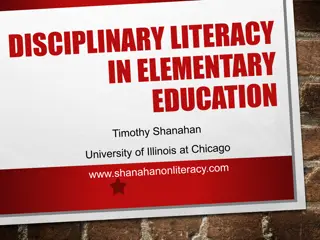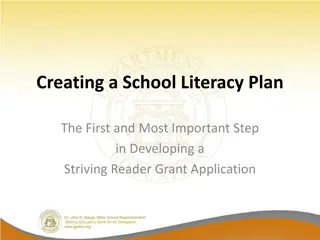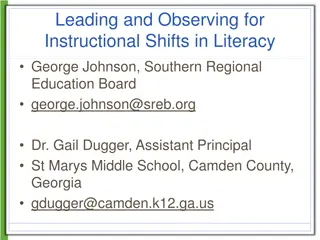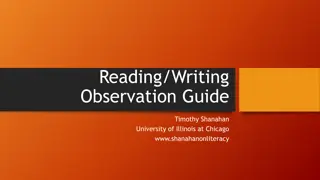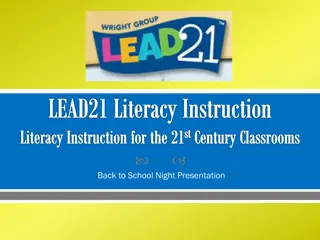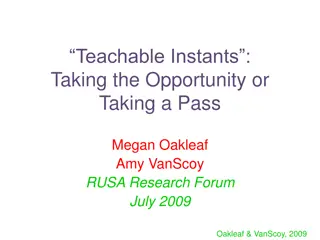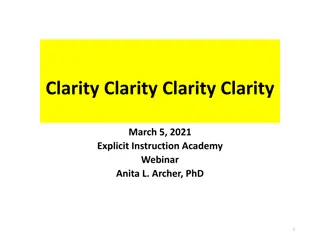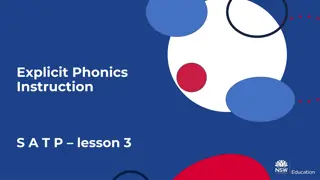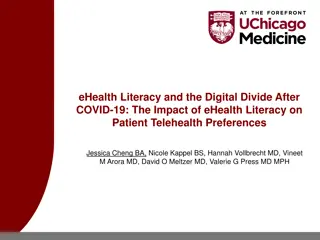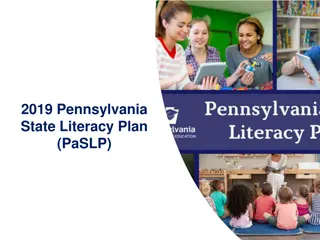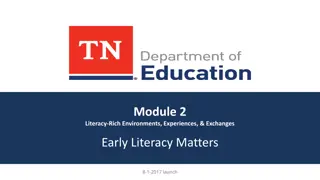Enhancing Literacy Instruction with Explicit Strategies
Explicit instruction is a direct, clear, and effective teaching approach that empowers students to learn independently. This method emphasizes structured guidance, practice, and feedback to ensure comprehension and skill development. Cognitive planning focuses on critical content and big ideas, such as phonological awareness skills, to enhance learning outcomes in schools and shape America's future positively.
Download Presentation

Please find below an Image/Link to download the presentation.
The content on the website is provided AS IS for your information and personal use only. It may not be sold, licensed, or shared on other websites without obtaining consent from the author. Download presentation by click this link. If you encounter any issues during the download, it is possible that the publisher has removed the file from their server.
E N D
Presentation Transcript
Explicit Instruction America s future walks through the doors of our schools everyday. -Mary Jean LeTendre www.HILLforLiteracy.org
Explicit Instruction IS Direct, Clear, Effective Systematic, engaging, and success oriented. Uses clear and consistent language to reduce confusion and prevent misunderstanding. Follows the I Do, We Do, You Do model; instructional tasks are fully explained and modeled for students before students are asked to put them into practice themselves.
Explicit Instruction Independent Practice/ Review You do Guided Practice/ Corrections/ Feedback We do Review/ Presentation I do Cognitive Planning Preparation 5. 6. State lesson objective Review prior skills and knowledge Step-by-step demonstration Examples/ non- examples 1. Focus on critical content Sequence skills logically Breakdown skills Organize and focus lessons 9. 10. Frequent Reponses 11. Monitor Performance 12. Immediate affirmative/ corrective feedback Guided Practice 13. Help students organize knowledge 14. Cumulative and Distributive Practice 2. 7. 3. 4. 8. Clear/ concise language Pace
Cognitive Planning: Focus on Critical Content WHAT to teach Big Ideas Big ideas are: the fundamental concepts and principles that facilitate the most efficient and broadest acquisition of knowledge Big ideas focus attention on: the most relevant aspects of a content area and function as anchoring concepts
Cognitive Planning: Focus on Critical Content What makes a Big Idea a Big Idea? A Big Idea is: Predictive of reading acquisition and later reading achievement Something we can teach and measure Something that has an enormous impact on outcomes for children if/when we teach it PA !!!!! Working Memory? Letter Naming ?! Not every idea is a BIG idea! Coyne, M., February 2015
Essential Phonological Awareness Skills Big Ideas Blending at the phoneme level Putting individual sounds together to make a spoken word /fff/ - /iii/ - /nnn/ fin Segmenting at the phoneme level Pulling individual sounds apart in a spoken word fin /fff/ - /iii/ - /nnn/ Coyne,M., February 2015
Scaffolded Instruction Students with intensive learning needs require substantial supports to gain cognitive access to the complexities of information. Instructional scaffolding is support that teachers and materials provide learners during instruction. Scaffolds are mediated by the specific needs of the learner and are gradually withdrawn once mastery is demonstrated so that students can begin to apply skills independently.
Scaffolded Instruction Systematically introduces concepts and skills, beginning with easier tasks and progressing to more difficult ones. Careful and intentional example selection: Introduction/ Guided Practice/ Independent Practice Reinforces and builds on previously taught and learned information. Introduces a manageable amount of information at a time and separates potentially confusing concepts. Includes material supports such as graphic organizers, procedural facilitators, and concrete manipulatives.
Explicit & Scaffolded Instruction Mastery TEACHER Prompts (Physical, Verbal, Visual Prompts are Faded) Corrective/ Affirmative Feedback (Tell, Remind) Unprompted Practice (You Do It) Modeling Demonstrations (Show & Tell) Prompted Practice (Tell, Ask, Remind) Students Involved in Model ( Active, Verify, Rehearse) Explicit Instruction STUDENT (Pearson & Gallagher, 1983; Archer & Hughes, 2011)
Instructional Needs of Struggling Readers Although some children will learn to read in spite of incidental teaching, others never learn unless they are taught in an organized, systematic, efficient way by a knowledgeable teacher using a well-designed instructional approach. (Moats, 1999)
Instructional Perspective on Teaching and Learning Two very different questions: What is it about this student that makes her unable to learn? 1. What is it about this instruction that makes this student unable to learn? 2.
Explicit Instruction is Active & Engaging 1) Frequent responses are elicited. 2) Student performance is carefully monitored. 3) Immediate affirmative and corrective feedback is provided. 4) The lesson is delivered at a brisk pace. Archer, A. & Hughes, C. (2011). Explicit Instruction: Effective and Efficient Teaching. Guildford Press. New York, NY.
